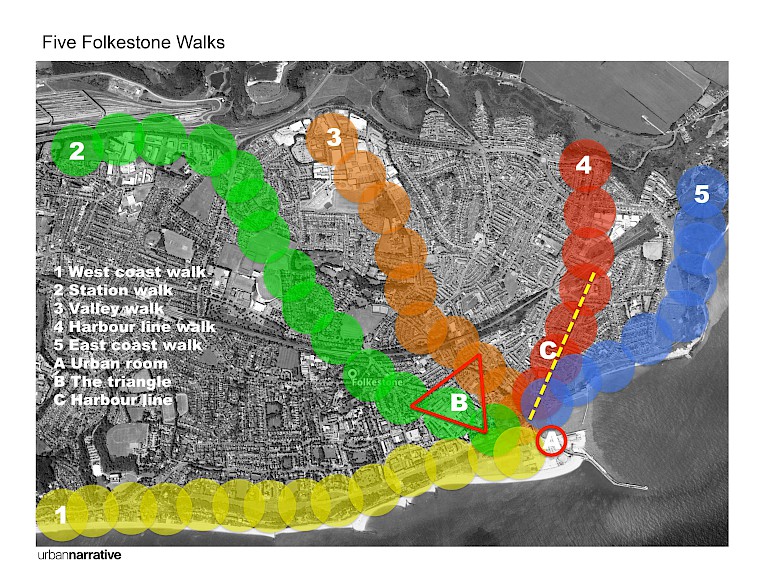


Over countless millennia the Pent Stream and its tributaries cut through the chalk cliffs of the south coast slowly shaping the topography of the area and creating a sheltered haven for people to come down to the sea. Folkestone was founded and grew over a very long period around this fortuitous carving of geology by water. The human history of Folkestone is of people coming down to the sea from the land; along cliff top coastal paths; along roads and tracks in the farming hinterland of Kent; of more modern roads; of railways defying the topography with engineering to bring trains across the valley and down to the sea.
Folkestone is also a built narrative of boats and shipping connecting to the land with flows of goods and people back along the same tracks, roads and rail lines into the land. We might imagine evolving patterns of movement from land to shore and from shore to land whose origins provide the foundation of the town. It is a pattern of movement from edge to centre and centre to edge.